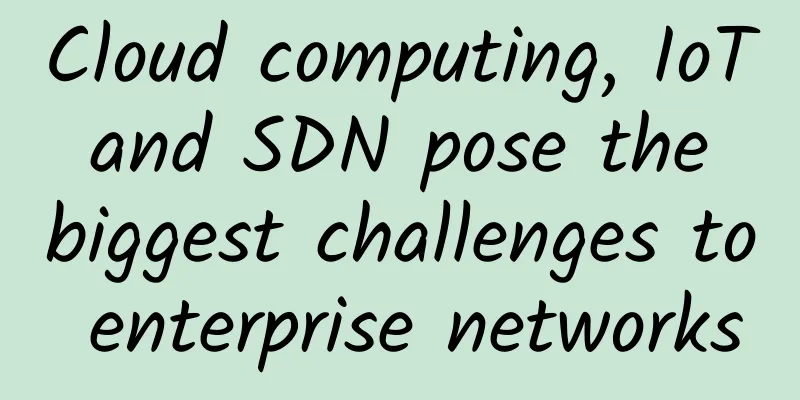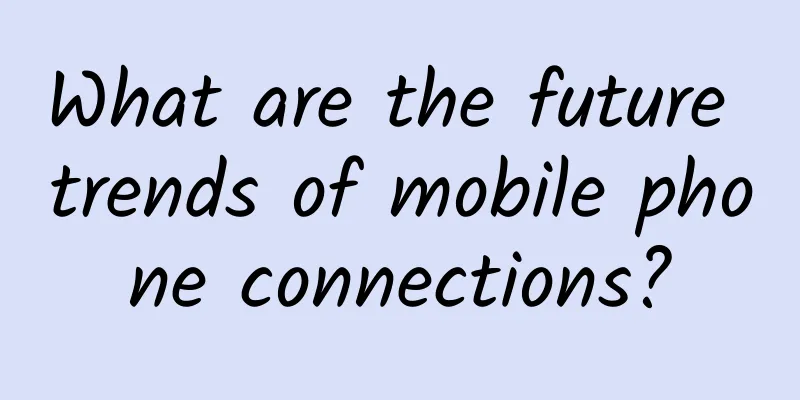Is the WiFi6 network upgrade in your new or old home so great?

|
At the beginning of the new year, many friends began to "think" about decorating their new homes. As people rely more and more on the Internet, many families have begun to pay attention to the construction of home networks. In particular, the Wi-Fi 6 technology that has emerged in recent years has made many friends who want to decorate their new homes wonder, is Wi-Fi 6 really that attractive?
When it comes to building a home wireless network environment, the current mainstream technologies are Wi-Fi 4, Wi-Fi 5, and Wi-Fi 6. When home users are installing a new home, should they choose Wi-Fi 4 or Wi-Fi 5 relative to the traditional ones? Or should they choose Wi-Fi 6 technology? What are the differences between the three, and what kind of changes can they bring to the wireless network experience for home users? What is Wi-Fi 6 As the sixth generation of Wi-Fi technology, Wi-Fi 6 adopts the 802.11ax standard. In 2018, the Wi-Fi Alliance officially incorporated Wi-Fi based on the 802.11ax standard into the regular army. Taking the opportunity of promoting 802.11ax, the Wi-Fi specification was renamed, and the new standard 802.11ax was renamed Wi-Fi 6. Not only did the naming convention change, but a new icon was also used for Wi-Fi device network connections. Technically, Wi-Fi 6 can support both 2.4G and 5G frequency bands, and is the sixth generation of Wi-Fi iteration standard in the true sense. It will also replace the 11n and 11ac products on the market. In addition, Wi-Fi 6 also brings a full version of MU-MIMO (supporting 8 terminals uplink/downlink MU-MIMO), and introduces OFDMA technology to achieve another parallel transmission capability that complements MU-MIMO, and is more flexible and practical than MU-MIMO. What are the advantages of Wi-Fi 6 compared to the previous generation? Compared with the previous generation of Wi-Fi, the most prominent feature of Wi-Fi 6 is the significant increase in speed. The theoretical maximum speed of Wi-Fi 5 is 6.9Gbps, while Wi-Fi 6 increases it to 9.6Gbps, an increase of nearly one-third. This will greatly improve our daily Internet speed. The higher speed is the first impression most people have of Wi-Fi 6, but the advantages of Wi-Fi 6 are not limited to this. In addition to faster speeds, better performance in crowded areas is another major advantage of Wi-Fi 6. In simple terms, it solves the performance bottleneck in crowded areas and provides a smoother Internet experience when multiple devices are connected to Wi-Fi. After all, multiple devices connecting to Wi-Fi at the same time can easily cause network lag, and Wi-Fi 6 can solve this problem very well. The reason is that Wi-Fi 6 uses two black technologies, OFDMA and MU-MIMO. The OFDM solution of Wi-Fi 5 is to dispatch vehicles according to orders, regardless of the size of the goods. One order is sent for one trip, even if it is a small piece of goods, one vehicle is sent. This leads to low utilization of the carriages, low efficiency, and waste of resources. Wi-Fi 6 using OFMDA technology can divide the wireless channel into multiple sub-channels to form frequency resource blocks. User data is carried on each resource block instead of occupying the entire channel, so that multiple users can transmit in parallel at the same time in each time period. Compared with previous technologies, OFMDA technology aggregates orders and tries to make trucks fully loaded on the road, which greatly improves transportation efficiency. If OFMDA technology effectively improves the transmission speed, MU-MIMO technology enables parallel use by multiple users. Although Wi-Fi 5 also supports MU-MIMO, the router is only allowed to communicate with 4 devices at a time, and only supports downlink MU-MIMO. The MU-MIMO technology carried by Wi-Fi 6 allows the router to communicate with up to 8 devices at a time, and supports uplink and downlink MU-MIMO at the same time, without the need to communicate in sequence; in comparison. The upgrade from Wi-Fi 5 to Wi-Fi 6 is more like the expansion of a one-way 4 lane to a two-way 8 lane. Multiple devices are no longer like many vehicles waiting in line to exit from one exit, which greatly improves communication efficiency. Wi-Fi 6 that supports TWT (Target Wakeup Time) technology is more power-efficient. It allows APs to plan communications with devices and negotiate when and how long to wake up to send/receive data. Terminals can be grouped into different TWT cycles, reducing the time required to keep the antenna powered on to transmit and search for signals, which means reducing power usage and the number of devices competing for wireless resources at the same time after waking up. Which one should I choose: 5G or Wi-Fi 6? We have introduced Wi-Fi 6 technology and its advantages. I believe everyone has a deeper understanding of Wi-Fi 6. So, as 5G is on par with Wi-Fi 6, which one has more advantages? In fact, in our opinion, Wi-Fi 6 and 5G are not a question of "having your cake and eating it too", but are limited by considerations of multiple factors such as time, space, and interests. As a technical solution to the "localization" of short-distance wireless transmission, all protocols starting with 802.11 (including 802.11ax, ac, b, g, n, etc.), including Wi-Fi 6, do not involve any controlled spectrum resources. The frequency band where 5G is located is a spectrum resource that is developed by 3GPP and communication associations of various countries and is controlled by the government. The similarities between the two are that both Wi-Fi 6 and 5G use OFDMA and MU-MIMO technologies, which have increased bandwidth and access capacity by 4 times compared to their predecessors. The two are essentially very different. Wi-Fi 6 is actually a wireless technology with a smaller coverage range. The transmission power of the router and the use environment determine the coverage range of Wi-Fi 6. Due to power and spectrum resource limitations, most routers are more suitable for covering a certain indoor scene. The 5G network is a communication technology that is uniformly planned and managed by the country. It is generally deployed outdoors and has a wider range and is less susceptible to interference than Wi-Fi 6. Therefore, 5G is mainly used in public network access and Internet infrastructure access. Are Wi-Fi 6 routers really that good? Do you really need to upgrade your home router now? Although Wi-Fi 6 is attractive, users should still refer to their own usage environment and needs before purchasing. The wireless standard supported by your home router is outdated. If it supports a version lower than Wi-Fi 4, we recommend that you upgrade your home router to a new product that supports the Wi-Fi 6 standard. After all, Wi-Fi 6 has become standard for newly released mobile phones, laptops and other devices. From home use and e-sports to large-sized routers, the current Wi-Fi 6 router market is full of new products, with prices ranging from a few hundred to a few thousand yuan. Although it has shown a trend of gradual catching up, it is not achieved overnight. Final Thoughts In general, Wi-Fi 6 router products can bring users a smoother Internet experience, and at the same time, they complement 5G in a good way. If conditions permit, replacing your home with a Wi-Fi 6 router will definitely give you a different experience. |
>>: It’s time to show the real technology! See 5G+IoT=?
Recommend
Growth and development opportunities brought by 5G to IoT companies
Since the first major announcement just two years...
RAKsmart: US servers start from $20/month for the first month, Japan/Korea servers start from $59/month, cluster servers start from $109/month
RAKsmart is carrying out the "New Year's...
Why is distributed networking an emerging trend?
The mass adoption of the Internet can be attribut...
NGINX Official Test Center was established to release exams and certifications to provide skills upgrade for Chinese NGINX users
On April 8, 2021, the NGINX Official Authorized C...
Focusing on intelligent network connectivity and IoT innovation, H3C made a stunning appearance at the 2019 World Internet of Things Expo
[51CTO.com original article] On September 7, the ...
Network | Where is the United States in its race to seize the 5G market?
Experts have been hyping up 5G's gigabit spee...
Riverbed is your smarter choice to accelerate your business with the power of digital experience management
[Original article from 51CTO.com] In the context ...
Talk: It's time to talk about what IPv4 and IPv6 are
On November 25, 2019, the RIPE NCC, which is resp...
The love-hate relationship between Bluetooth 5 and WiFi
It can be said that Bluetooth and Wi-Fi each have...
The difference between continuous delivery and continuous deployment
Continuous delivery does not mean that every chan...
Aruba and Digital China work together to build a smart campus project
On September 19, during the Atmosphere 2017 confe...
South Korean operators to invest $22 billion in 5G networks by 2022
South Korean mobile operators SK Telecom, KT and ...
In the era of data center explosion, attention should be paid to network cabling
With the advent of the big data era, all kinds of...
Interview surprise: What are the common HTTP status codes?
HTTP status code is the response status code retu...
Intelligent evolution and win-win ecological future, Huawei China Ecosystem Partner Conference 2019 grandly opened
On March 21, Huawei China Ecosystem Partner Confe...







![[11.11] OneTechCloud 30% off monthly VPS, 10% off dedicated servers, Hong Kong CN2, US CN2, CN2 GIA high defense optional](/upload/images/67cac04a7f816.webp)

